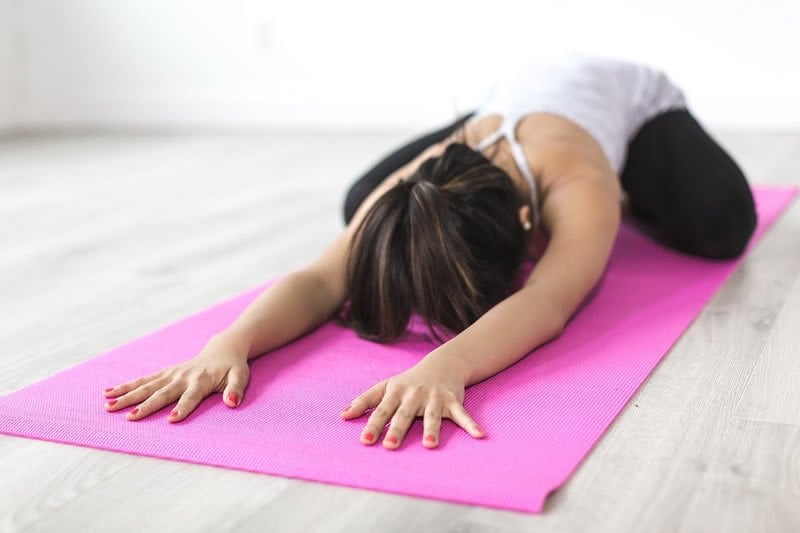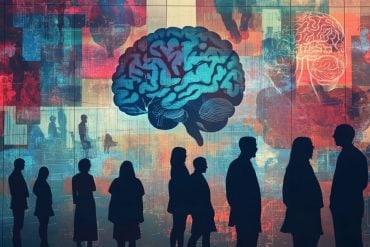Summary: Following 12 weeks of yoga instruction, people with chronic lower back pain reported a significant improvement in symptoms and better sleep over 52 weeks.
Source: Boston Medical Center
Yoga and physical therapy (PT) are effective approaches to treating co-occurring sleep disturbance and back pain while reducing the need for medication, according to a new study from Boston Medical Center (BMC). Published in the Journal of General Internal Medicine, the research showed significant improvements in sleep quality lasting 52 weeks after 12 weeks of yoga classes or 1-on-1 PT, which suggests a long-term benefit of these non-pharmacologic approaches. In addition, participants with early improvements in pain after 6 weeks of treatment were three and a half times more likely to have improvements in sleep after the full, 12-week treatment, highlighting that pain and sleep are closely related.
Sleep disturbance and insomnia are common among people with chronic low back pain (cLBP). Previous research showed that 59% of people with cLBP experience poor sleep quality and 53% are diagnosed with insomnia disorder. Medication for both sleep and back pain can have serious side effects, and risk of opioid-related overdose and death increases with use of sleep medications.
“Identifying holistic ways to treat these conditions could help decrease the reliance on these medications as well as keep patients safer and more comfortable,” said Eric Roseen, DC, MSc, a researcher in the department of family medicine at BMC, who led the study.

The randomized controlled trial included 320 adults with cLBP from BMC and seven surrounding community health centers. At the beginning of the study, over 90 percent of participants with cLBP were found to suffer from poor sleep. Participants were assigned one of three different therapies for cLBP: physical therapy, weekly yoga, or reading educational materials. Previous research from BMC discovered that yoga and PT are similarly effective for lowering pain and improving physical function, reducing the need for pain medication. In this study, results for sleep improvements were compared over a 12-week intervention period and after 1 year of follow-up.
“The high prevalence of sleep problems in adults with chronic low back pain can have detrimental effects on a person’s overall health and well-being,” said Roseen, also an assistant professor of family medicine at Boston University School of Medicine. “This really emphasizes the need for providers to ask patients with chronic low back pain about the quality of their sleep. Given the serious risks of combining pain and sleep medications, nonpharmacologic approaches should be considered for these patients.”
Funding: This study was funded by the National Center for Complementary and Integrative Health (NCCIH), under grant numbers 1F32AT009272-01 and 5R01-AT005956.
Source:
Boston Medical Center
Media Contacts:
Jazmin Holdway – Boston Medical Center
Image Source:
The image is in the public domain.
Original Research: Closed access
“Yoga, Physical Therapy, and Back Pain Education for Sleep Quality in Low-Income Racially Diverse Adults with Chronic Low Back Pain: a Secondary Analysis of a Randomized Controlled Trial”. Eric Roseen et al.
Journal of General Internal Medicine doi:10.1007/s11606-019-05329-4.
Abstract
Yoga, Physical Therapy, and Back Pain Education for Sleep Quality in Low-Income Racially Diverse Adults with Chronic Low Back Pain: a Secondary Analysis of a Randomized Controlled Trial
Background
Poor sleep is common among adults with chronic low back pain (cLBP), but the influence of cLBP treatments, such as yoga and physical therapy (PT), on sleep quality is under studied.
Objective
Evaluate the effectiveness of yoga and PT for improving sleep quality in adults with cLBP.
Design
Secondary analysis of a randomized controlled trial.
Setting
Academic safety-net hospital and 7 affiliated community health centers.
Participants
A total of 320 adults with cLBP.
Intervention
Twelve weekly yoga classes, 1-on-1 PT sessions, or an educational book.
Main Measures
Sleep quality was measured using the Pittsburgh Sleep Quality Index (PSQI) global score (0–21) at baseline, 12 weeks, and 52 weeks. Additionally, we also evaluated how the proportion of participants who achieved a clinically meaningful improvement in sleep quality (> 3-point reduction in PSQI) at 12 weeks varied by changes in pain and physical function at 6 weeks.
Key Results
Among participants (mean age = 46.0, 64% female, 82% non-white), nearly all (92%) reported poor sleep quality (PSQI > 5) at baseline. At 12 weeks, modest improvements in sleep quality were observed among the yoga (PSQI mean difference [MD] = − 1.19, 95% confidence interval [CI] − 1.82, − 0.55) and PT (PSQI MD = − 0.91, 95% CI − 1.61, − 0.20) groups. Participants who reported a ≥ 30% improvement in pain or physical function at 6 weeks, compared with those who improved < 10%, were more likely to be a sleep quality responder at 12 weeks (odds ratio [OR] = 3.51, 95% CI 1.73, 7.11 and OR = 2.16, 95% CI 1.18, 3.95, respectively). Results were similar at 52 weeks.
Conclusion
In a sample of adults with cLBP, virtually all with poor sleep quality prior to intervention, modest but statistically significant improvements in sleep quality were observed with both yoga and PT. Irrespective of treatment, clinically important sleep improvements at the end of the intervention were associated with mid-intervention pain and physical function improvements.
Trial Registration
ClinicalTrials.gov Identifier: NCT01343927






